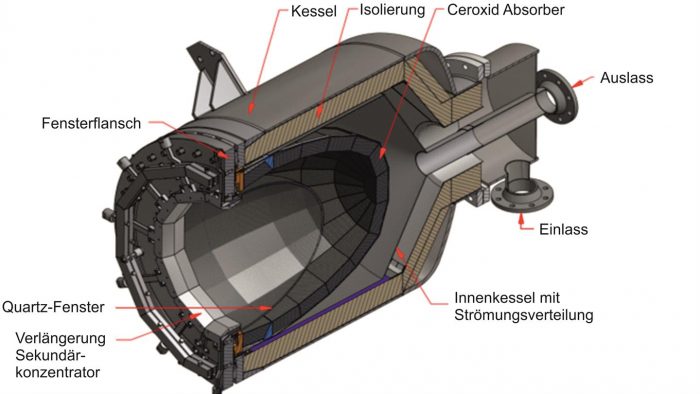
Solar reactor uses solar thermal energy to split water to hydrogen
Source: Hydrogen Insight
The US government has finally unveiled its long-awaited proposed rules on clean hydrogen production, determining the criteria that developers will have to meet in order to qualify for the hydrogen tax credit of up to $3 per kilogram.
The proposed guidelines closely match the draft version that was leaked to the press earlier this month, including the controversial requirements for additionality, hourly matching and geographical correlation (see panel below) — measures already introduced in the EU to ensure that fossil-fuel-fired power cannot be used directly or indirectly to produce green hydrogen.
Green hydrogen projects in the US will have to source power input from renewables assets on the same regional grid that have been installed within three years of H2 production starting.
However, while the EU allows matching of renewable power to electrolyser operation within a calendar month until 2030, at which point the two must take place within a one-hour window, the US Treasury has set annual matching up to 2027 and hourly matching from 2028 onwards — making the rules stricter than in Europe.
“Additionality” means that the green hydrogen would have to be produced from new renewables projects, so that they do not utilise existing clean electricity facilities that would otherwise help decarbonise the power grid.“Time-matching”, or “temporal correlation”, relates to how frequently producers would have to prove that their electrolysers have been powered by 100% renewable energy — usually hourly, weekly, monthly or annually — and therefore to what extent they can use grid electricity at times when the wind isn’t blowing and the sun isn’t shining, and then send the same anount of renewable energy back to the grid at a later date.”Geographic correlation” refers to how close the hydrogen-producing electrolyser is to the source of renewable energy it uses. Distances can be set to ensure that an electrolyser in, say, Texas, is not powered by solar panels in California through renewable energy credits, which in practice could mean that green power is sent to a grid that doesn’t need it, with the electricity actually used by the electrolyser coming from fossil-fuel power plants.All three rules would prevent fossil-powered grid electricity being used directly or indirectly to produce “green hydrogen”.
“The Inflation Reduction Act’s hydrogen tax credit will help build a clean hydrogen industry that will be critical in reducing emissions from harder-to-decarbonize sectors like heavy industry and heavy transportation,” said John Podesta, senior advisor to the US President for clean energy innovation and implementation.
A public consultation on the proposals will now take place, with a public hearing scheduled to take place on 25 March 2024. It is not clear when the guidelines will be finalised.
Prospective hydrogen producers and some Democratic politicians have lobbied hard against such rules, arguing that they would increase the cost of green hydrogen by reducing the number of hours an electrolyser can be operational, slow down the nascent sector’s growth, and be discriminatory because other clean-energy solutions, such as EVs and heat pumps, were not subject to such restrictions.
Just last week, controversial Democratic senator and coal magnate Joe Manchin, whose vote had been crucial to getting the IRA passed, declared that the leaked regulations were “horrible”, telling Bloomberg: “We are fighting it. It doesn’t do anything the bill does. They basically made it ten times more stringent for hydrogen.”
“The Inflation Reduction Act’s hydrogen tax credit will help build a clean hydrogen industry that will be critical in reducing emissions from harder-to-decarbonize sectors like heavy industry and heavy transportation,” said John Podesta, senior advisor to the US President for clean energy innovation and implementation.
A public consultation on the proposals will now take place, with a public hearing scheduled to take place on 25 March 2024. It is not clear when the guidelines will be finalised.














































